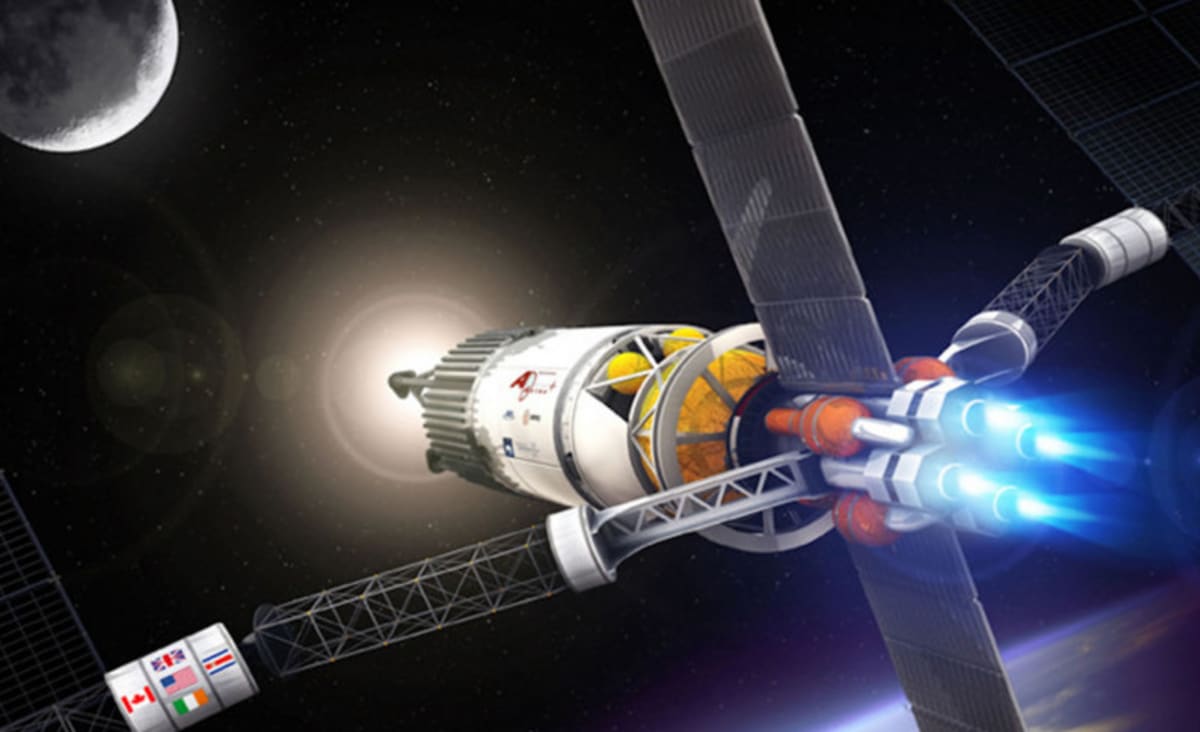
interestingengineering.com
A New Electric Jet Engine Actually Works Inside the Atmosphere
Unlike other plasma jet engines, this new Chinese one can actually work in the atmosphere. This could prove revolutionary for the aerospace industry.
Science & Tech
A new design of a plasma jet engine was unveiled last year by a group of researchers in China. While not a new technology in and of itself, this new design could be the secret to allowing the use of these engines in the atmosphere — not just limited to space.
While the thrust output is still pretty puny when compared to conventional atmospheric engines, once scaled, this new type of engine could prove revolutionary for the aerospace industry.
But before we take a look at this new design, let's get the down-low on how plasma jet engines work.
What is a plasma propulsion engine?
Plasma-based thrusters are usually thought of as a potential form of spacecraft propulsion. Such engines differ from ion thruster engines, which generate thrust by extracting an ion current from its plasma source. These ions are then accelerated to high velocities using grids or anodes.
Plasma engines don't normally require high voltage grids or anodes/cathodes to accelerate charged particles in the plasma source but use the currents and potentials that are generated internally, in the form of a high-current electric arc between the two electrodes, to accelerate the ions. This tends to result in a lower exhaust velocity as there is a limited voltage used for acceleration.
However, with little to no air friction in space, the thrust of these engines doesn't need to be that high. If a constant acceleration can be pumped out for months or years at a time, it could be possible to eventually reach a very high velocity.
Such engines have various advantages over other forms of electrical propulsion. For example, the lack of high voltage grids of anodes reduces the risk of grid ion erosion.
Another advantage is that the plasma exhaust is what is termed "quasi-neutral". This means that the positive ions and electrons exist in equal numbers, which means simple ion-electron recombination in the exhaust can be used to extinguish the exhaust plume, removing the need for an electron gun.
Typical examples of these engines tend to generate the source plasma using a variety of methods, including radiofrequency or microwave energy using an external antenna. Because of the nature of the design of these engines a range of propellants can be used in them including argon, carbon dioxide, or even human urine.
As you'd expect, there are also some inherent drawbacks to this technology. Chief among them is the high energy demand required to power them.
For example, the Variable Specific Impulse Magnetoplasma Rocke (VASIMR) VX-200 engine requires 200 kW electrical power to produce 1.12 pounds (5 N) of thrust or 40 kW/N. In theory, such an energy demand could be met using fission reactors on spacecraft, but the added weight might prove prohibitive for launching the craft in the first place.
Another challenge is plasma erosion. While in operation, the plasma can thermally ablate the walls of the thruster cavity and support structure, which can eventually lead to system failure.
Such engines, to date, are only really useful once the spacecraft is in space. This is because of the relatively low thrust that prohibits them from realistically being used to launch the craft into orbit. On average, these rockets provide about 2 pounds (4.45 N) of thrust. Plasma thrusters are highly efficient once in space, but do nothing to offset the orbit expense of chemical rockets.
























































